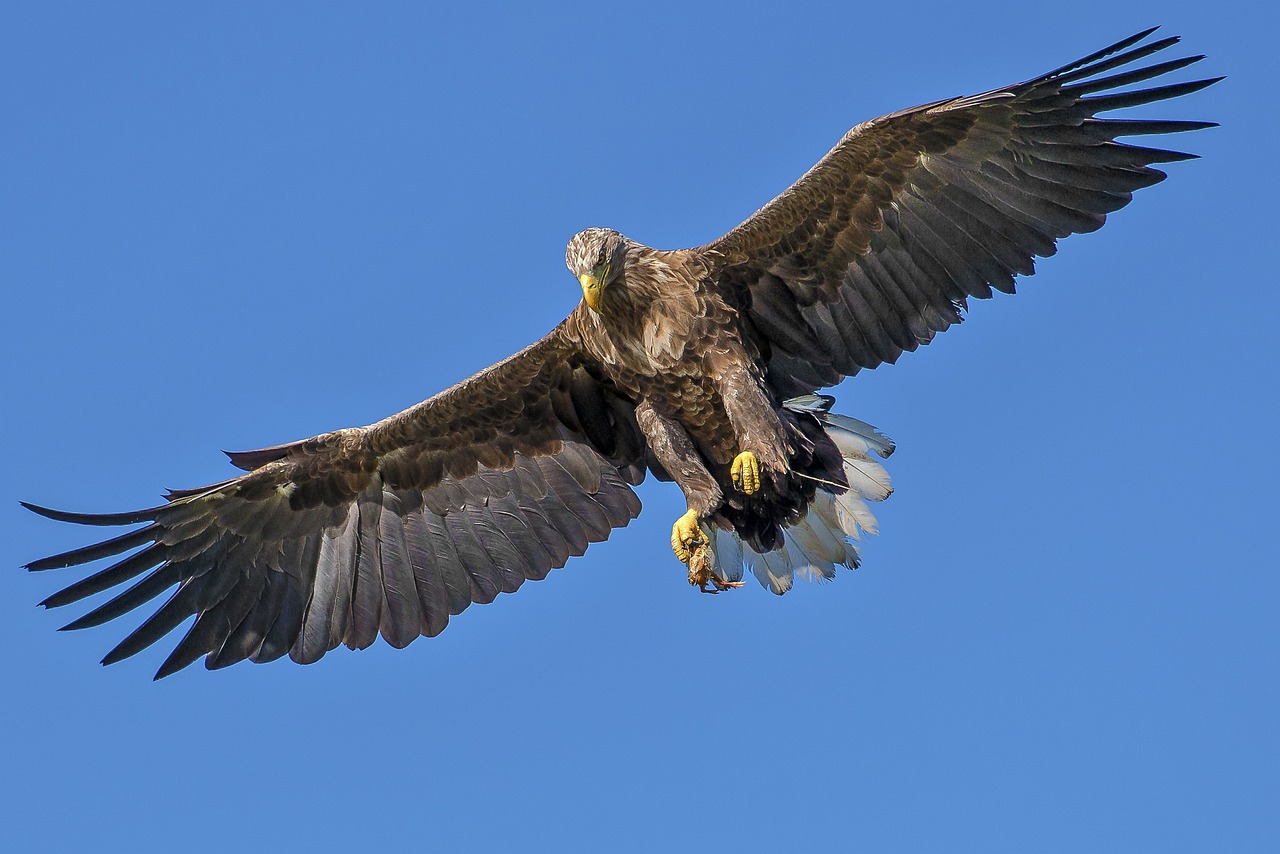It is a large bird, with a wingspan reaching up to 2.2 meters, making it one of the largest birds in the UK. The adult golden eagle is primarily dark brown, with golden-brown plumage on its head and nape, which gives it its distinctive golden appearance. Its eyes are a striking yellow, and its powerful beak is hooked, designed for tearing through the flesh of its prey. Juvenile golden eagles have white patches on their wings and tail, which fade as they mature.
Golden eagles are typically found in the remote and rugged landscapes of the Scottish Highlands, as well as in the Inner and Outer Hebrides. They prefer open habitats such as moorland, grassland, and mountainous regions, where they can hunt freely and build nests away from human activity. Their diet consists of mammals like rabbits and hares, as well as birds such as grouse. In times of scarcity, especially during the winter, they also feed on carrion. Their hunting style involves soaring high in the sky, using their incredible vision to spot prey, and then diving at speeds of up to 150 miles per hour to catch it.
Golden eagles are highly territorial creatures, often remaining in the same area for many years. They are also monogamous, forming long-term bonds with their mates and sharing large nests, called eyries, which are usually built on cliffs or in tall trees. These nests can grow significantly over time as the eagles continue to add material each year.
Despite their status as apex predators, golden eagles in Scotland have faced significant challenges, particularly due to human interference. Historically, they were persecuted by landowners, farmers, and gamekeepers who saw them as a threat to livestock or game. Habitat loss and illegal poisoning have also taken a toll on their population. However, thanks to legal protections and conservation efforts, there are now around 440 breeding pairs in Scotland, and their numbers have stabilized.
The golden eagle holds great cultural significance in Scotland, often symbolizing freedom, power, and the untamed beauty of the country’s landscapes. It has been a subject of admiration in Scottish folklore, art, and tourism. Today, the golden eagle is a beloved symbol of Scotland’s wild nature and is cherished by birdwatchers and conservationists alike.


